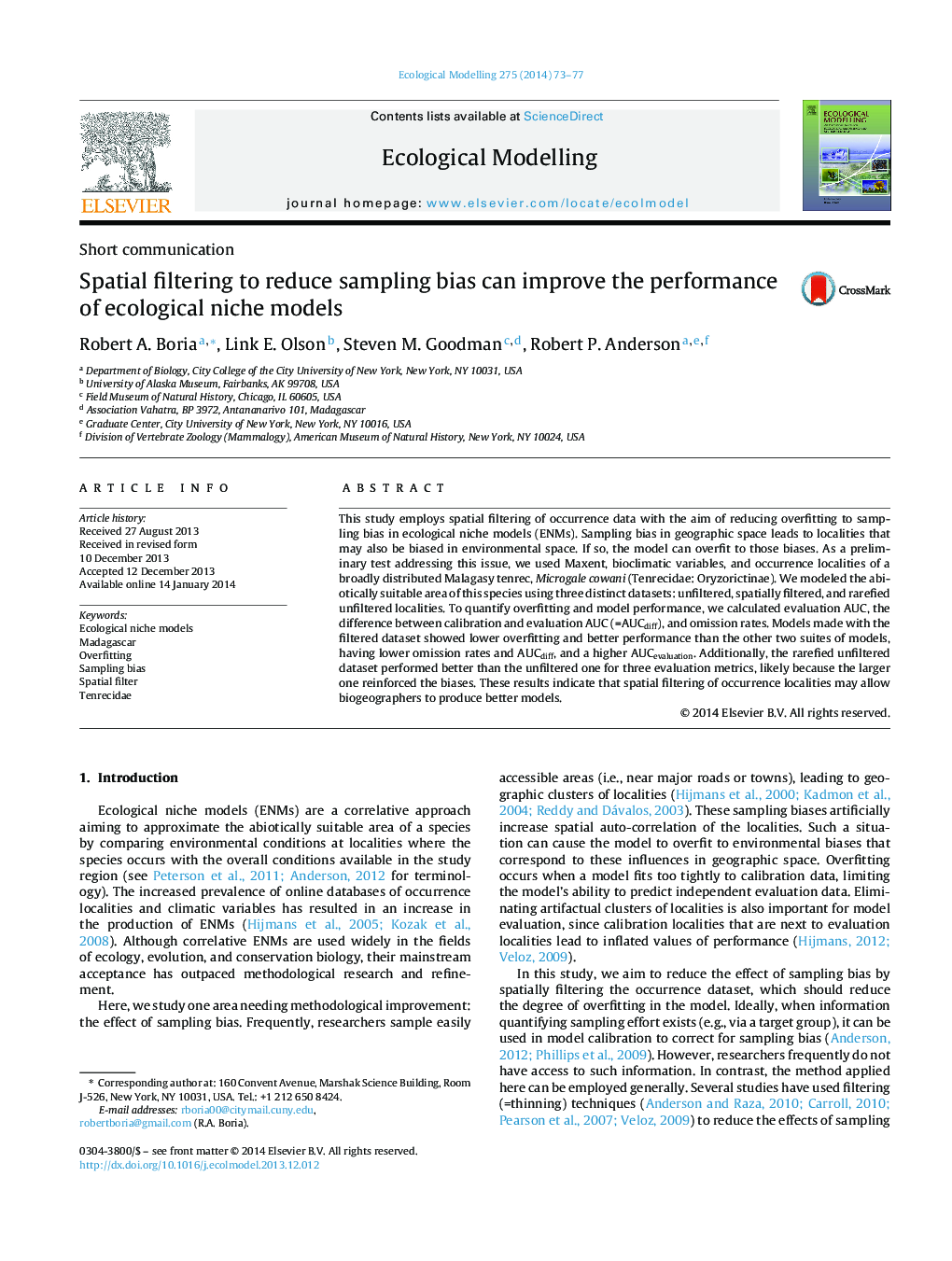| Article ID | Journal | Published Year | Pages | File Type |
|---|---|---|---|---|
| 4376003 | Ecological Modelling | 2014 | 5 Pages |
•This study employs spatial filtering of occurrence data.•The aim was to reduce overfitting to sampling bias in ecological niche models.•We quantified overfitting and model performance.•Spatially filtered models showed lower overfitting and better performance.
This study employs spatial filtering of occurrence data with the aim of reducing overfitting to sampling bias in ecological niche models (ENMs). Sampling bias in geographic space leads to localities that may also be biased in environmental space. If so, the model can overfit to those biases. As a preliminary test addressing this issue, we used Maxent, bioclimatic variables, and occurrence localities of a broadly distributed Malagasy tenrec, Microgale cowani (Tenrecidae: Oryzorictinae). We modeled the abiotically suitable area of this species using three distinct datasets: unfiltered, spatially filtered, and rarefied unfiltered localities. To quantify overfitting and model performance, we calculated evaluation AUC, the difference between calibration and evaluation AUC (=AUCdiff), and omission rates. Models made with the filtered dataset showed lower overfitting and better performance than the other two suites of models, having lower omission rates and AUCdiff, and a higher AUCevaluation. Additionally, the rarefied unfiltered dataset performed better than the unfiltered one for three evaluation metrics, likely because the larger one reinforced the biases. These results indicate that spatial filtering of occurrence localities may allow biogeographers to produce better models.
